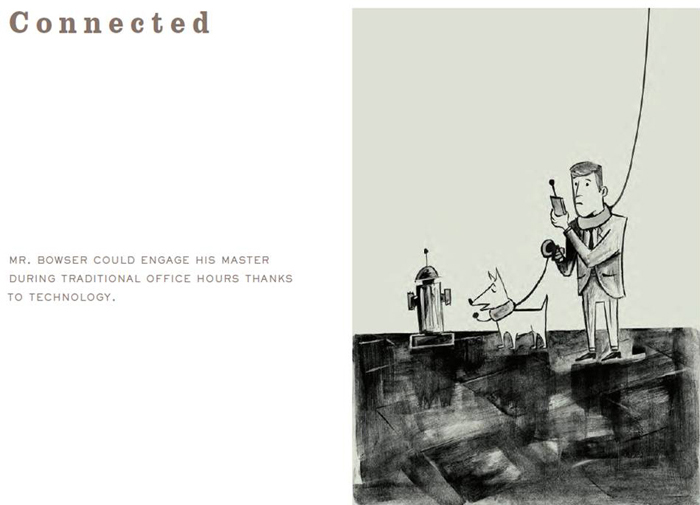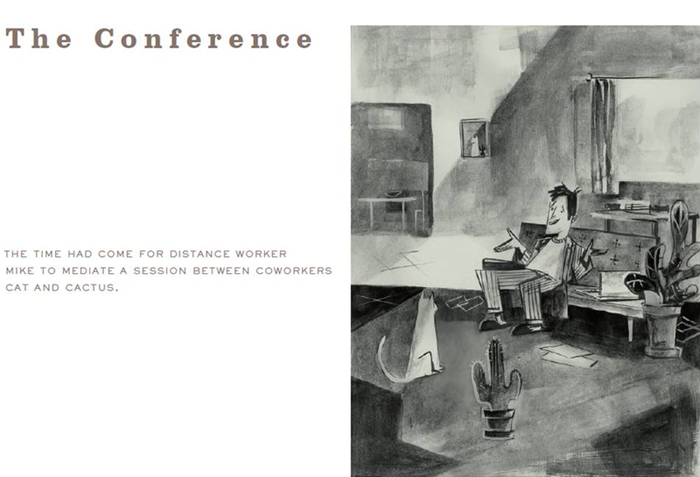08.15.12
Phone Booths & Mailboxes
Phone booths and mailboxes both were once a common element in the urban landscape, but are now redundant thanks to technologies such as e-mail and mobile phones.
The pervasive use of technology in the workplace and, more specifically, mobile technologies has had a huge effect on how work is organized, conducted and experienced. Mobility may be one of the most significant changes that technology has wrought, freeing people to work anytime and anywhere. Connectivity and mobility also require that we rethink the spaces, furniture and other elements that make up our office landscape.
We are free to work where we want, with whom we want, when we want. We have basically become the new nomads, with the ability to work location- and barrier-free. Will technology also make the office go the way of the phone booth and the mailbox?
Technology Use
We have become heavy users of technology. Research group Forrester estimates that there will be one billion smart phone customers by 2016, with 257 million smart phones and 126 million tablets in the U.S. alone. Our personal and professional lives have never been so intertwined. This has allowed us freedom to do two things at once and work when the time is right, not when it is pre-prescribed.
However, we are now “always on,” which can be a problem. According to a recent survey, 57 percent of respondents checked work e-mails on family outings, 38 percent routinely checked work e-mails at the dinner table and 25 percent reported that their mobile work habits while away from the office caused an occasional disagreement with their partners. We are working more; our eight-hour work day now seems to be replaced with an ad-hoc 12-hour day. We are connected in a manner that we once needed the office to achieve
Adoption of Technology and Mobility
In the same way, technology has altered the form and function of the office. Mobility changes how, when, where and with whom we work. This is seen as a plus. Benefits of mobile work are:
Business
– Potential for decrease in real-estate/capital assets
– Access to a global pool of talent
People
– Work/life balance
– Improved personal health and safety
– Increased ability to do focused work
Workplace
– Promote interaction and collaboration
– Increase in productivity
Environmental
– Decrease energy use
– Reduce emissions and carbon footprint
The telework coalition in Washington, D.C., estimates that 89 of the top 100 companies in the U.S. offer some form of telecommuting. There appears to be minimal resistance — even excitement —about the potential for greater mobility.
Changing How We Work
Indications are that we can identify four basic types of workers with regard to mobility in all offices (the ratio of each will change company to company, but all exist).
Fixed-focus resident workers who spend all or most of their time working at a designated desk in an enclosed or open workspace
In-motion, on-site workers who come to an office to work, but may or may not have an assigned desk and work at various sites, including shared workspaces, casual collaborative spaces and private quiet rooms
Externally mobile workers or “road warriors” who tend to be in constant motion, working the majority of the time in different locations and relying on technology to stay connected to “base camp”
Distance workers who primarily work in one location and visit the central office building from time to time for training, meetings or other activities that require their physical presence.
The Goal of the New Office
The office performs vital roles even in the face of technology and does not appear to be going the way of the Phone Booth or the Mailbox. The new goal in office design is to satisfy the needs of these four distinct worker types in a cohesive plan – to create an environment whose primary function is to be an engagement center and collaborative hub of activity. The goal is to create an engaging and adaptable workplace, one that fosters a lively, collegiate culture and delivers a superior level of innovation. Perhaps, ideally, this is a place where people forget they are at work and experience a rewarding creative, intellectual and social life.
Visit Teknion.com to learn more about Phone Booths & Mailboxes and the effects of technology & Mobility on office design
Steven Delfino Vice President , Corporate Marketing & Product Management Teknion Corporation Back to Blog



